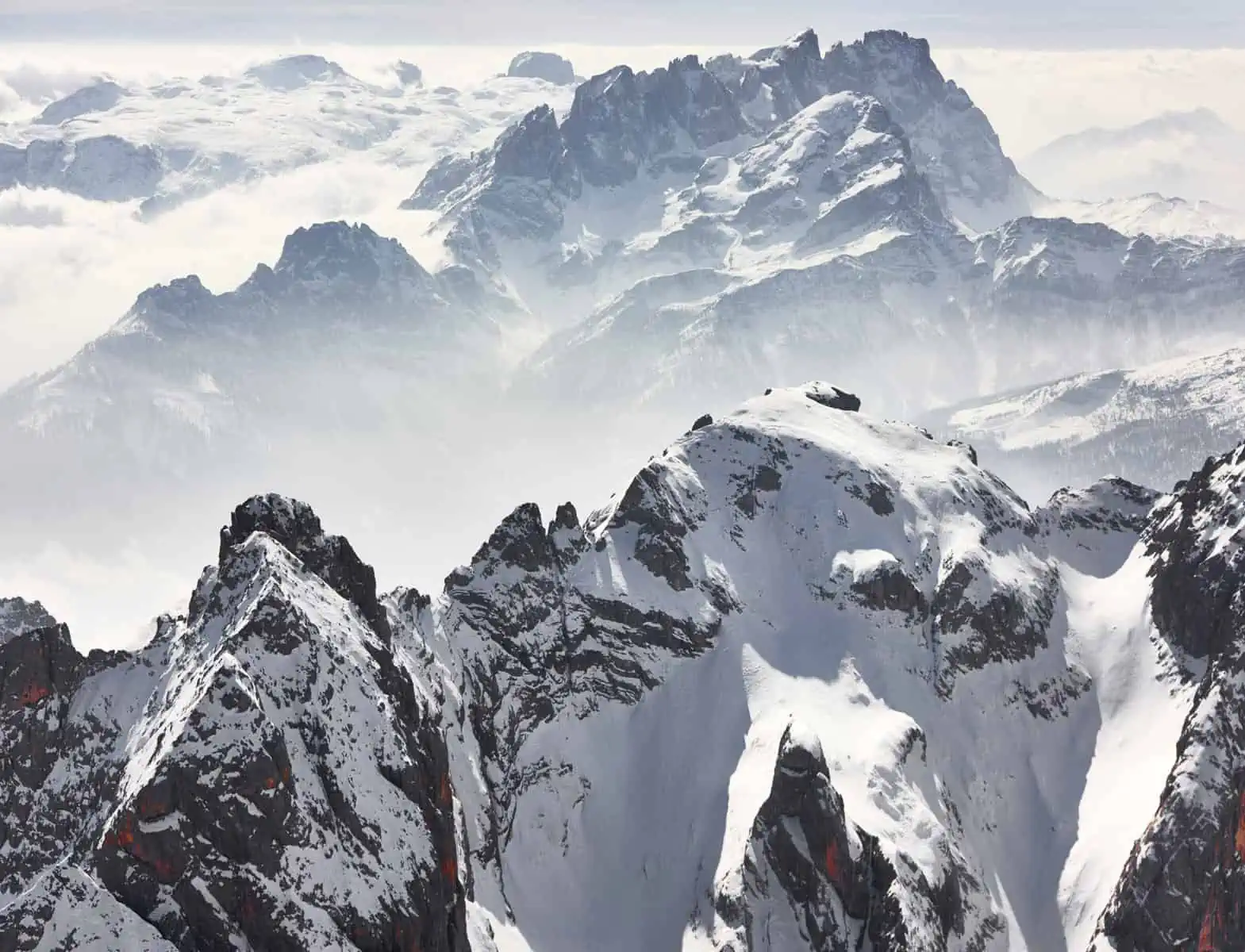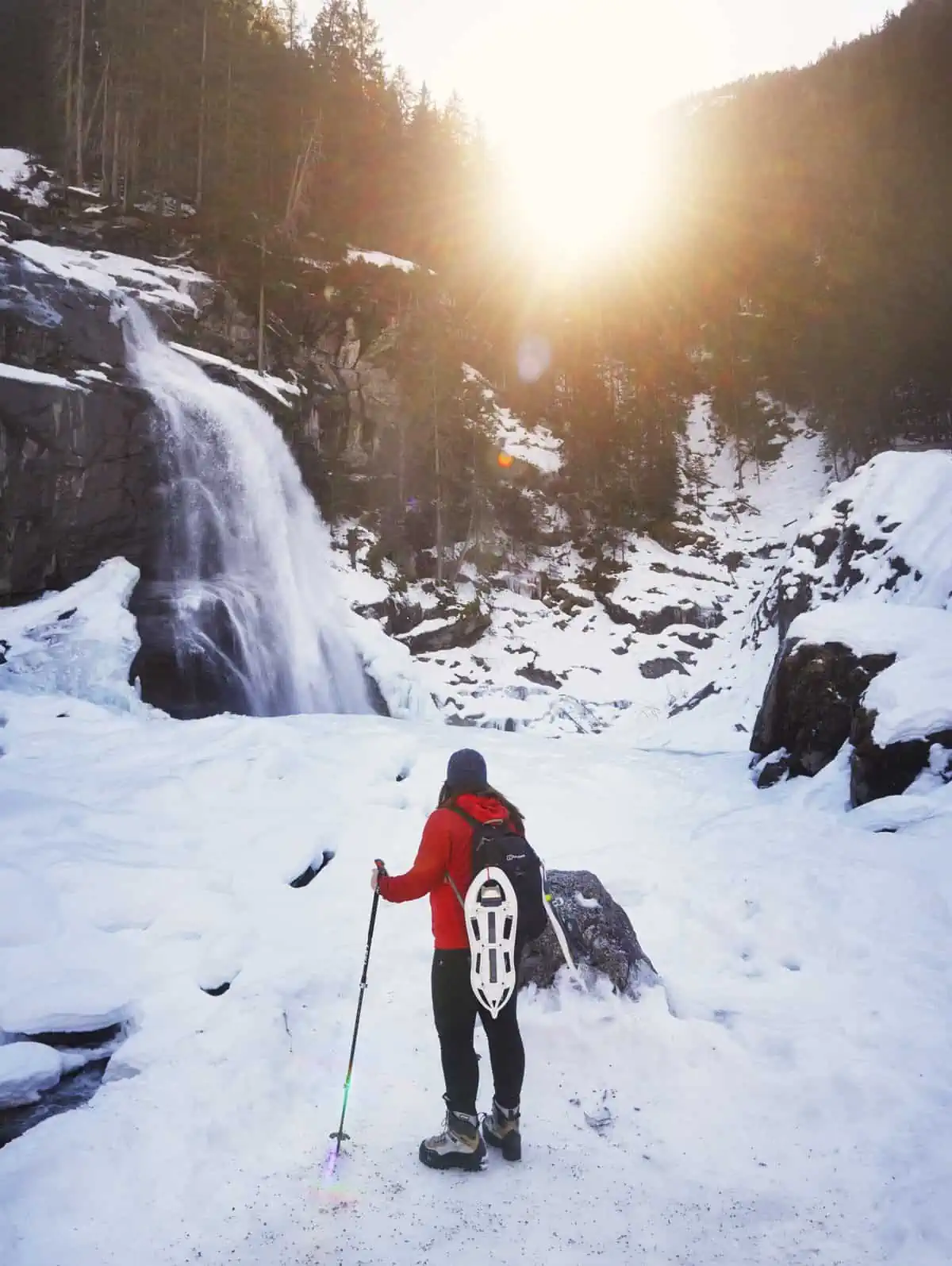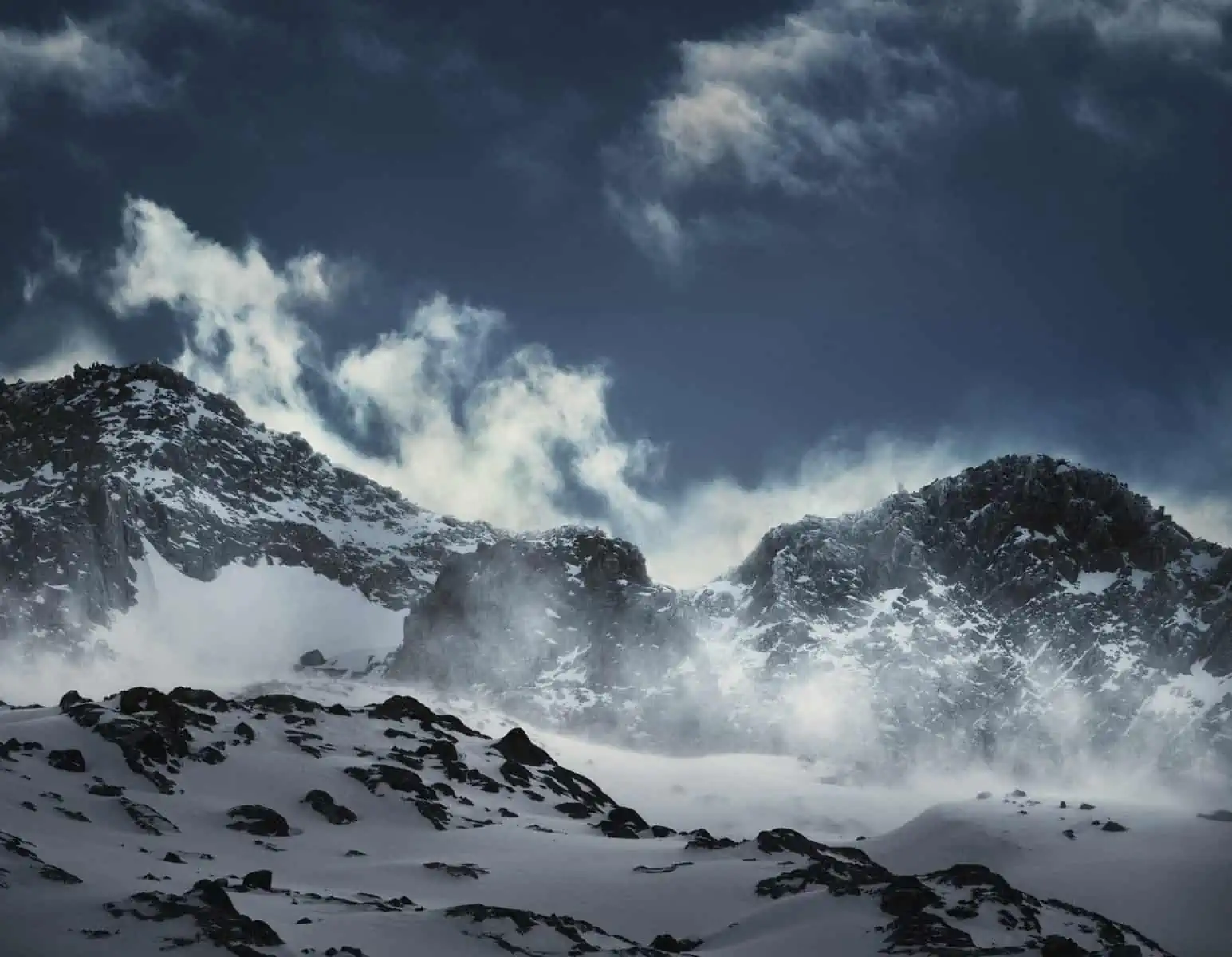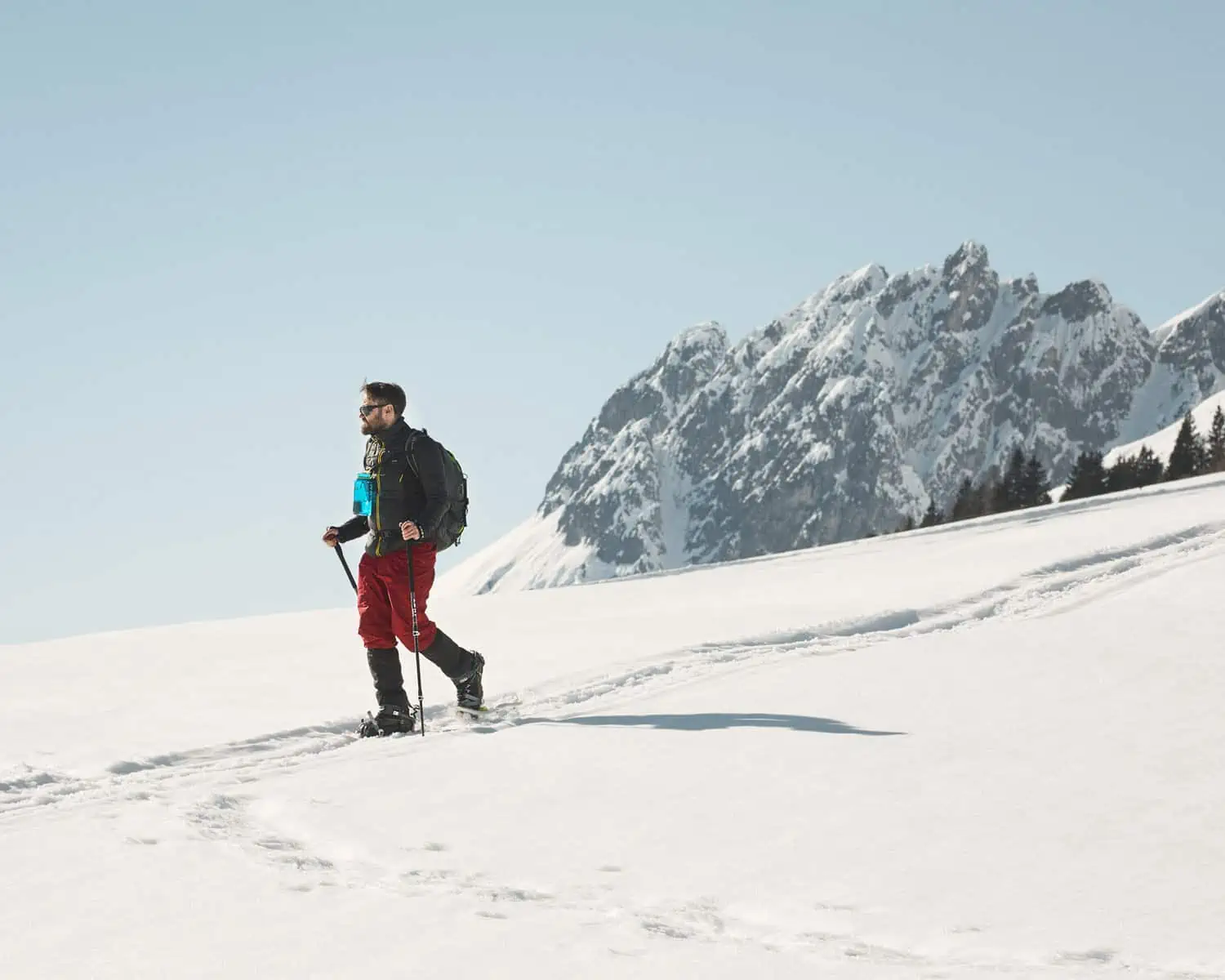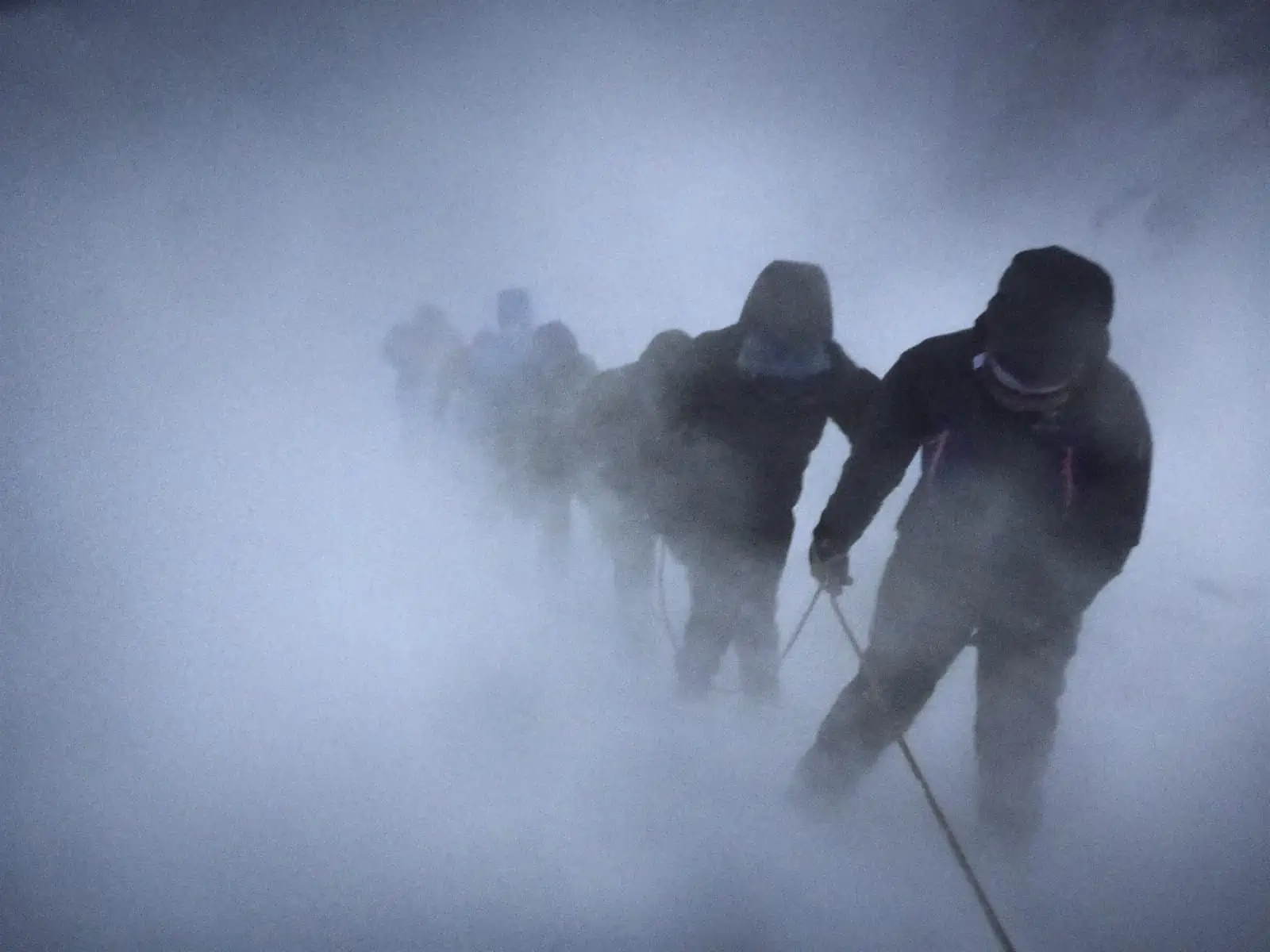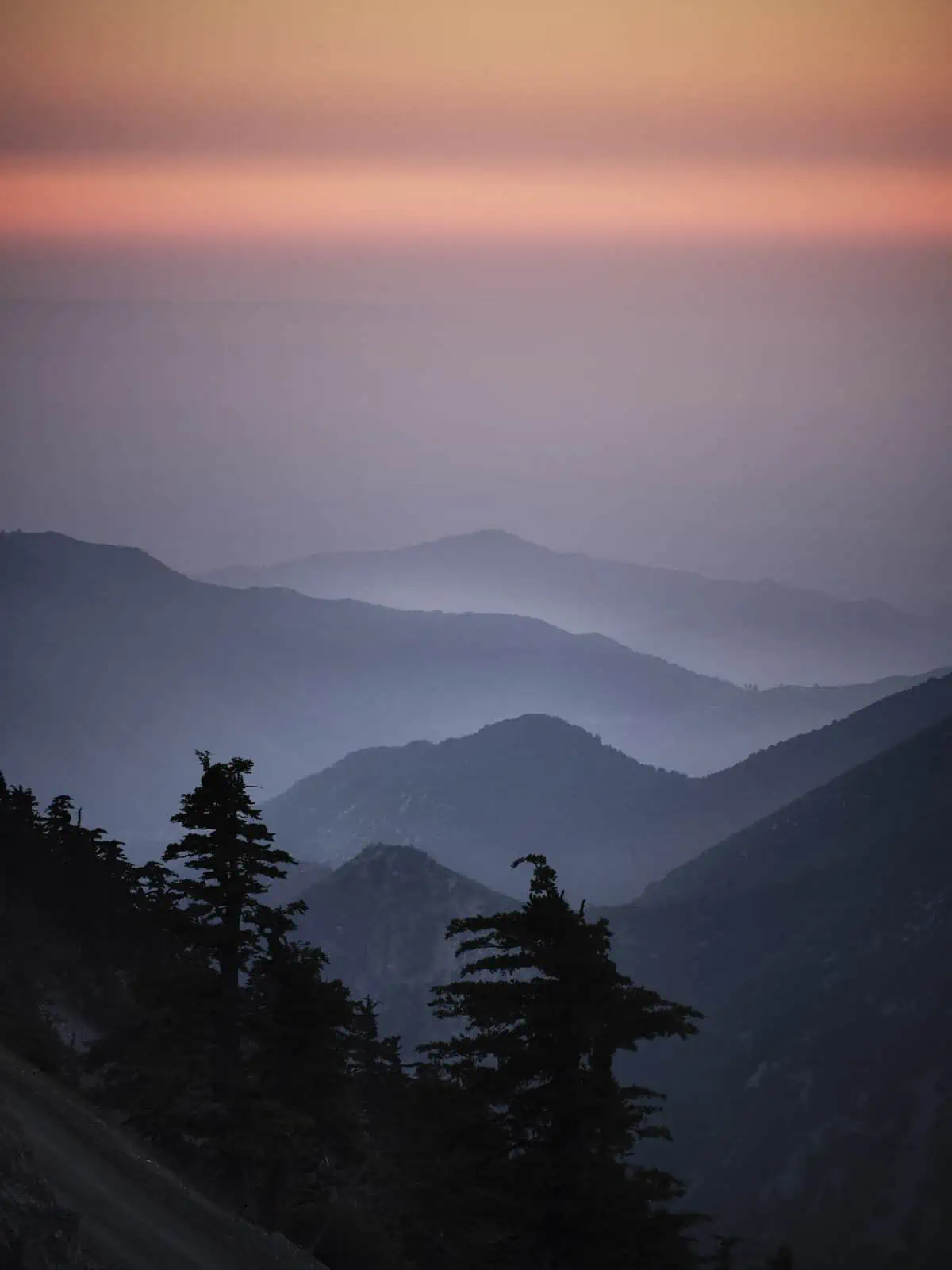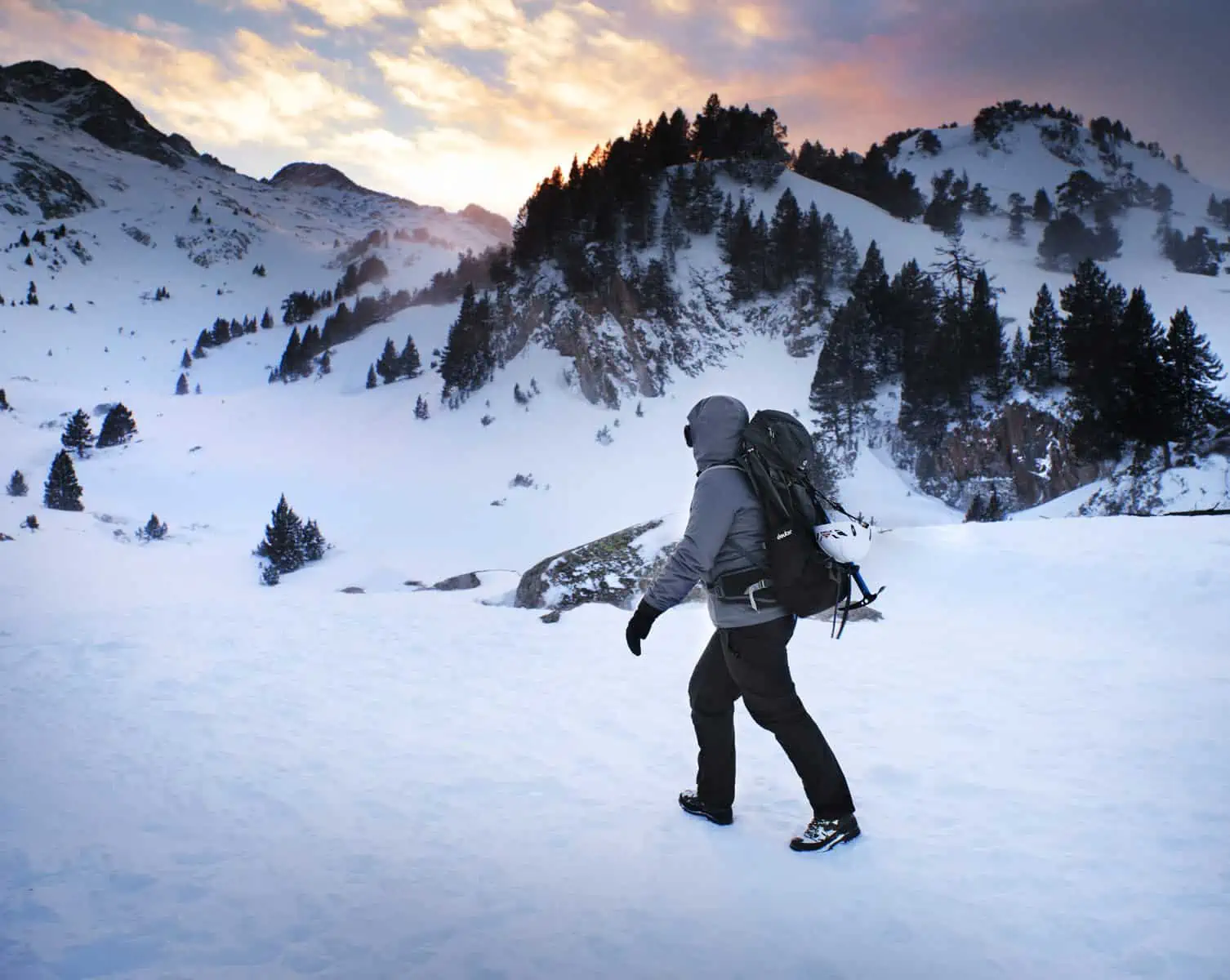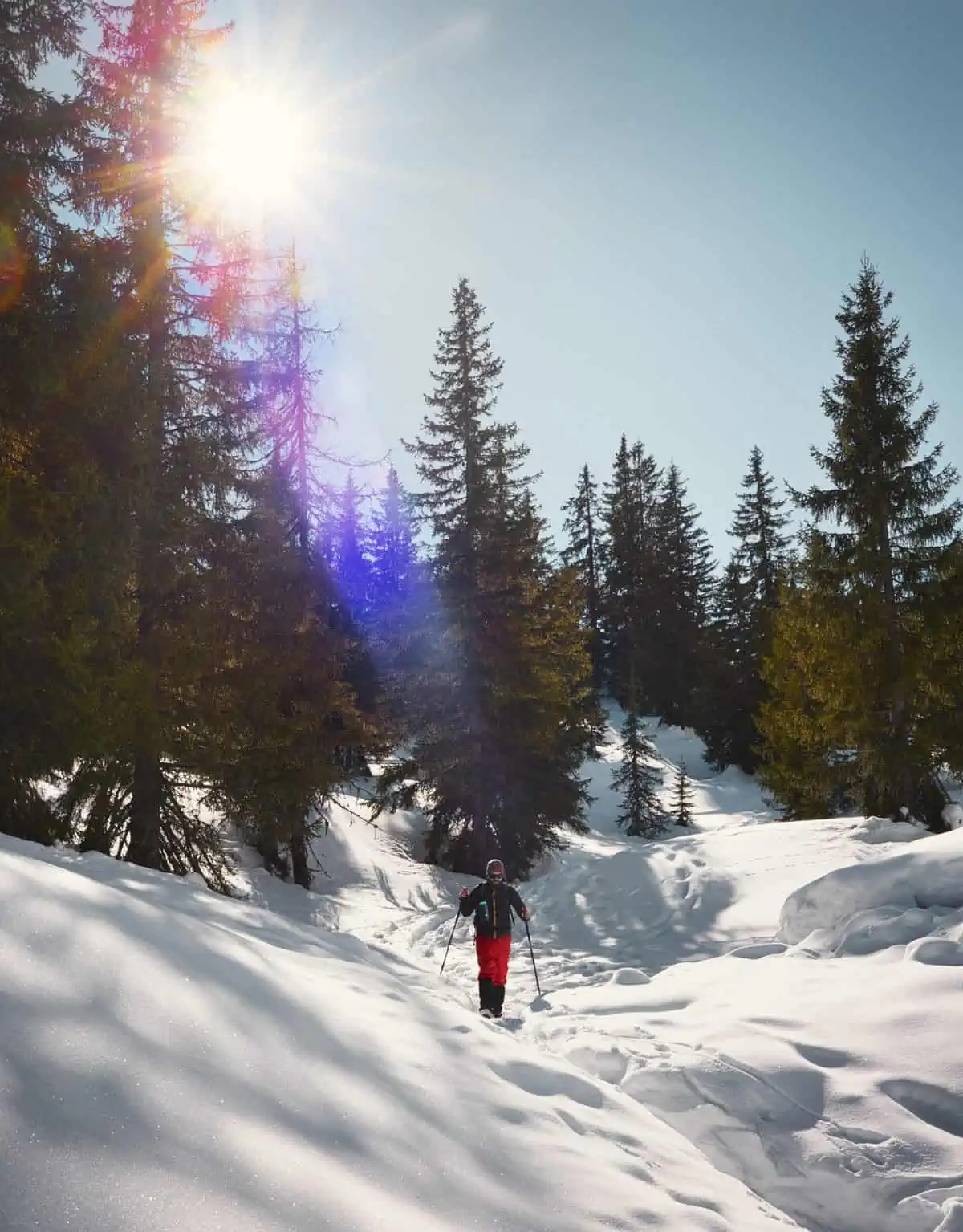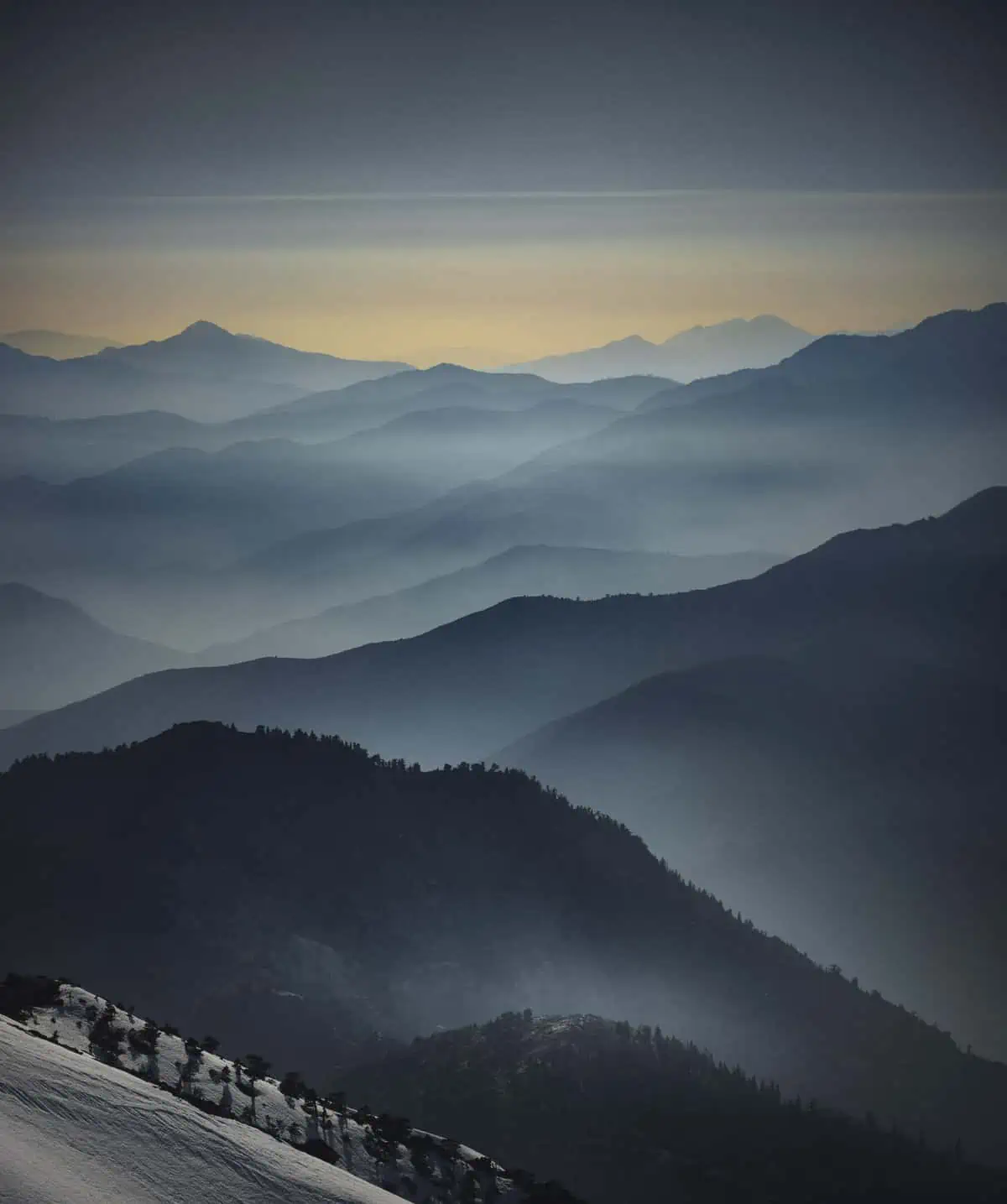Disclaimer: This post is sponsored by 360 Expeditions, a travel adventure specialist, whose Expedition Skills Course we took part in January 2019, all opinions are our own.
Earlier in the year we published a post about how to prepare yourself physically and mentally to push your adventures to the next level (you can find that article here). We talked about some of the simple steps you can take to ensure you are as prepared as you can be for your adventures – making sure you are comfortable with your gear, know how to use your camera, are confident with your fitness and so on. Beyond all this, we’ve come to realise that there is also a more fundamental level of preparation that will become more and more important as you push yourself further.
There comes a point in all of our travels where we hit hard limits of skill and ability. For us, this came as a series of realisations that we were starting to get a little out of our depth. The more we hiked and the more ambitious our objectives became, the more we saw that we needed a stronger set of base skills to enable us to achieve what we wanted. It’s difficult to pinpoint exactly when and how this realisation set in, but a key moment was in Switzerland a few years back: having hiked to the beautiful Oeschinensee, we saw the peaks of the Blüemlisalphorn and the Wildi Frau rising above the far shore. There was absolutely no way we were going to climb them. One glance said they were completely beyond our ability. But we didn’t want them to be. Looking at the snow-covered peaks, we wanted so much to be up there. In the grander scheme of things, these are not tall peaks, but what they represented struck a chord – peaks like these would be the next stage of our journey.
There would be other, similar instances: A peak or a view point just tantalisingly out of reach; a descent that felt just a bit too much on the wrong side of scary; a sense of doubt over the safety of a certain hike causing us to curtail our plans and often significantly affecting our confidence which meant we were less able to do less of what we love: photography, and enjoying the outdoors.
Our experience as walkers had carried us this far, but as our hiking became more ambitious and as we started to spend more time in deep winter (snowy!) conditions, we realised we needed to up our game in terms of base skills. We asked ourselves ‘what would be the next step?’ and made the decision to look into winter mountain skills courses. Sure, you can spend years and years trying to develop the skills you need yourself, saving money.Alternatively, you can accelerate your learning by taking the advice of and learning from, watching and working with people who already have what you want. If you can create huge shortcuts in your life towards your desires, why take the hard route?
We did some research online and, whilst there is no shortage of options out there, it was difficult to find something that would be a good fit – many of the courses we found had a strong focus on climbing, for instance, and whilst this does interest us, it didn’t seem to be quite what we were after. It can be helpful to see lots of what you don’t want to help you underline exactly what it is that you do want. Once you start to know what that is, what is it you want to learn, see, who do you want to be around and where do you want to go afterwards, that’s when you can make a plan. This process led us to the Expedition Skills Course offered by 360 Expeditions and it felt like the right fit for what we had dreams of accomplishing.
On any course like this you will be putting your safety into the hands of complete strangers.So, the first thing we did was to research 360 Expeditions.It soon became clear that we were dealing with true pros. They run a vast number of expeditions and adventure holidays ranging from desert trips to ascents of the tallest mountains on Earth (as we write, the Expedition Skills Course leader and another of the guides are leading an attempt on the North Col of Everest). The booking process was painless and our contacts at 360 were able to provide prompt and knowledgeable responses to any questions we had. We were provided with a thorough equipment list and a suggested training plan to meet the physical fitness requirements.
In January 2019 we set off on the course. We flew into Tolouse in the south of France and then transferred to the town of Luchon – in the Pyrenees and close to the border with Spain. The course itself was based around an ascent of a high peak – which peak exactly depends on the weather conditions, but in our case it was Aneto on the Spanish side – which at 3404m is the tallest peak in the Pyrenees.During the time on the mountain, we were based in the Refugio de la Renclusa mountain hut and whilst there we built a range of skills including crampon and snowshoe work, self-arresting, building snow anchors, assessing avalanche risk, reading weather reports, rope work (including absailing), creating snow holes and so on. Beyond this, the course offered a taster of expedition life that isn’t so easy to communicate in an itinerary: despite the refuge’s kitchen, we cooked on camping stoves. We carried in all of our food, and carried out all of our rubbish. For the time we were on the mountain, the expedition group would be our family.
In terms of our group, there were eight participants – most of whom had ambitions to work up to longer Himalayan expeditions. There were three guides from 360 accompanying our group.
Rolfe Oostra, the course leader and co-owner of 360 Expeditions set out the intentions for the course right from the start: We worked around our group and each of us shouted out the name of our dream mountain – our ultimate climbing goal. Everything we would learn on this course, he said, would be a step towards that goal.
Our first night was spent in a cosy guesthouse in Luchon. The guides took the time to check all of our kit individually to ensure we had appropriate clothing and equipment like helmets, snowshoes and crampons that 360 could provide was handed out.
Our second day was the first in the mountains and was taken up by a hike to Refugio de la Renclusa.We had been warned this could be the toughest day of the course as we had to carry not only our packs but also a share of our food up the mountain. To compound this, there had been unusually heavy snow. The first section of the trek, following a cross country skiing route was relatively straight forward, but we soon turned off piste for the ascent to the hut. It was tough going with near waist-deep snow in places. I think it’s safe to say it was the most difficult thing that many of the participants – ourselves included – had ever done. That first night’s food was welcomed! On the subject of food, 360 made a big deal about the importance of this as a morale booster. Expeditions, we were told, were often fuelled by instant noodles, but they felt it was important that we have a variety of fresh food, both to keep morale up and also to encourage you to eat – your appetite drops at high altitude. We shared cooking duty and the meals we had (ranging fromThai curryto sausage and mash) were well thought out and tasted great. We are both vegan and this was no problem at all – we carried a delicious vegan nut roast up the mountain and also had packets of specific vegan friendly hiking bars.
Image from ‘that brief walk outside’ mentioned below – Photograph Copyright Rolfe Oostra, 360 Expeditions, 2019
Unfortunately, the mountain had other ideas about a summit attempt. Europe was hit by a cold front blowing in from Siberia early in 2019 and It had been snowing heavily by the time we arrived at the hut and this continued through the night. The next day we were greeted with a total whiteout. A blizzard raged outside and visibility was limited to a few meters. We roped ourselves together and Rolfe took us on a brief walk outside – stepping out into the blizzard was like nothing else we had experienced. It was almost like being in outer space. Over the subsequent days in the hut the weather did improve, but not enough to allow us to safely make an attempt on the summit of Aneto. We did, however, have plenty of time to work on the various skills detailed above. The teaching approach was very hands-on: a technique was demonstrated and then we took turns or broke into groups to try it out ourselves. In some cases, this was very physical. Self-arresting, for instance – which is essentially using your ice axe to stop yourself if you fall on a climb – involved being shoved head first (both forwards and backwards) down a slope.
The backdrop for this was an incredible amphitheatre of peaks surrounding the hut. Whilst we did have good conditions at the hut, it was clear that higher up the conditions were brutal. We learned later that wind speeds of 120km/h had been recorded at the summit of Aneto.
We covered a lot of ground and Rolfe’s encyclopaedic knowledge of the mountains, expeditions and survival skills really brought the whole thing to life. Aside from the various skills already listed, we learned to ‘read’ cross sections of the snow pack to assess its stability, how to identify avalanche risks and the use of avalanche transponders and recovery procedures. It was clear too that Rolfe cared deeply about the mountains, and he took the time to explain to us the consequences of retreating glaciers and how climate change is making mountaineering a more dangerous sport. Rolfe was backed up by two support guides – one a trained medic. We cannot understate the professionalism and friendliness of the 360 team. The quality of the guides – in terms of their skills, knowledge and approachability – really made for a positive experience.
In the end we spend three nights on Aneto. The itinerary had originally suggested it would be four, but the weather was due to worsen and the decision was made to descend a day ahead of schedule (We later learned that the guardians in the refuge had been very impressed by the fact we’d made it up in such harsh weather at all – we made the local news, apparently!). We relocated back to Luchon and the final full day was spent there. Most of the team spent the final day rock climbing – and it looked like a lot of fun – but we had some photo work we needed to complete so headed up to the ski resort above the town to tick off the last few items on our shot list. It’s worth noting that Luchon is a beautiful town with historic thermal springs, some fantastic restaurants and the ski runs look absolutely great – you could easily add on a day or two after the Expedition Skills Course to unwind on the slopes or in the spa.
The following week, 360 ran the course again and were told that the next group had a very different experience to us. The harsh weather front had passed and despite the deep snow, the team successfully summited Aneto. You might think that we’d be disappointed or in some way jealous that we had missed out on the ‘prize’, but actually the opposite is true. In many ways, the harsh conditions made our experience extra special. We returned from the course with a fresh appreciation for the power of nature and also the knowledge that we had added some new tools to our outdoor kit – we were certainly ready for the next challenge! Beyond this, we met some fantastic people on the trip: The 360 team were beyond professional and we cannot wait to work with them in the outdoors again. We can also say we’ve made some good new friends amongst the other participants on the course.
Before we had even set off for the Pyrenees, we had our next trip to the mountains already planned in the Austrian and Italian Alps a couple of weeks later. This would be our second trip to the Alps in deep Winter. The first trip, exactly a year previous, had been a revelation, but also frustrating in many ways. Deep snow introduces a whole set of challenges and frankly, we didn’t know how to deal with it. Our hiking ambitions had to be seriously limited as we realised that we just couldn’t move through the deep snow with any efficiency, this coupled with the fact that we had no idea how to anticipate or assess the risk of avalanches meant that most of hiking was limited to very short outings. At the end of that first visit, we agreed we’d had a great time and photographically the trip was a resounding success, but there was also the sense we had missed out on a lot – that we had been left looking in from the roadside. The Expedition Skills Course in the Pyrenees would be the key to let us unlock the Winter Alps.
It’s difficult to draw a direct correlation between what we learned on the Expedition Skills Course and what we did on that trip to the Alps, but the difference in our confidence and ambition was marked. We often find that it’s the small details that highlight the biggest differences, and, whilst it may not seem like a big deal, we noticed that our equipment packing and prep before the trip was much more regimented and efficient. Once on the ground in the Alps, we found ourselves approaching our hikes with a new-found confidence. Using snowshoes we were able to push almost as far on some trails as we do in the Summer.
Our snowshoeing took us into active avalanche areas (in stark contrast to what we experienced in the Pyrenees a month earlier, the Alps were uncharacteristically warm and the snow pack was loosing stability). On our first full day hiking in Austria we witnessed an avalanche higher up the slope ahead of us – the sight and sound is not something that is easily forgotten. Instead of freaking out and freezing, we knew what to do and how to handle it. We’ve often found that there is a lack of connection between safety/understanding and being confident in the outdoors, and we really started to tap into our ability to read the situations with quick calmness rather than making decisions based on anxiety and fear.On many of our day hikes, we quickly found ourselves facing conditions or challenges that would have previously caused us to turn back, but this time, we pressed on. To be clear though, we are not mistaking confidence for recklessness. In fact, we found ourselves more aware of our environment and more aware of what actual risks there were rather than simply stopping because we though some undefined thing might go wrong.
The Alps this year was a resounding success for us and far surpassed what we achieved the previous year. For us, the obvious pay off comes from the photos we return with and being able to journey deeper into the snow and mountains certainly helped here. Beyond this, though, there is the sense of achievement – that we were participants this time more than just spectators.
As we write, we are currently in Southern California, and the hiking conditions are certainly varied– ranging from scorching heat in the Mojave Desert to deep snow drifts in the high San Gabriel mountains. It’s an almost contradictory combination of conditions that can see you setting out on a trek amongst cacti with crampons and ice axe lashed to your pack. We knew that much of the hiking we would do on this trip would take us further into the back country than we had previously been and once again the confidence we have gained from the Expeditions Skills Course has underpinned our progress: An ascent of Mount San Antonio – better known by its nickname Mount Baldy – took far longer than anticipated after a delayed start. If we pressed on to the summit we would be a way off the bottom when it got dark. In the past, this would have been an instant cause to abandon, but we were prepared with torches and head lamps and, more to the point, had night hiking experience in snow from our recent trip to the Alps so we continued, made the summit and had glorious golden light for the descent as the Sun set.Oh, and Matt also got to put his self-arresting skills to the test on the same descent.
It’s clear when you really look at your progress that it is built one block on top of another. Our confidence was improved in the Pyrenees which set us up to further improve on it in the Alps, and this process continues in the San Gabriel Mountains.
We’ve also found that due to the camp skills we learnt on the expedition that our through hikes and wild camps have run much more smoothly and have a full understanding of what we need, what we don’t need and how to make it all work quickly.
One of the biggest things, aside from the physical and practical things we learnt from the course has been the emotional and mental impact that doing a course like this has had on our hiking. The course was physically demanding, but the real work came from the mental challenges we faced, and as we said earlier, it was by far one of the toughest things we’ve ever done. The impact of doing and seeing just what we were capable of whilst being in the more than safe hands of the guides allowed us to really push ourselves well out of our comfort zones. We’ve found that since the course we are actively achieving things in the outdoors that before would have been a huge mental challenge. It really redefined what we class as ‘hard’.
We are not going to claim that the Expedition Skills Course has made us expert Alpinists – very far from it, and we are not quite ready for the Blüemlisalphorn and the Wildi Frau just yet – but it has certainly helped us refocus and reassess our goals in the outdoors. Every trip we take is step and with every step or skills and ambitions grow. The Expedition Skills Course was certainly tough but what we have gained from it is enormous. We certainly hope to be back in the Pyrenees to see the summit of Aneto before long.
360 Expeditions specialise in Adventure Travel and run treks, climbs, challenges, skills courses and many other adventures all over the world. You can book your place on the next Expedition Skills course here. When booking any trip with them, please quote either Fay or This Expansive Adventure.

